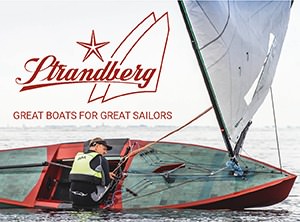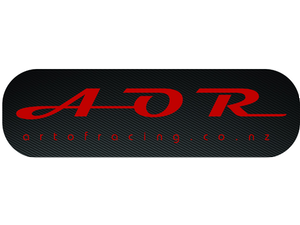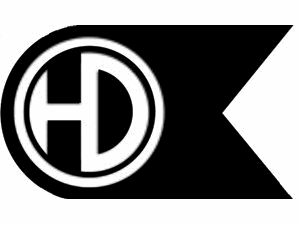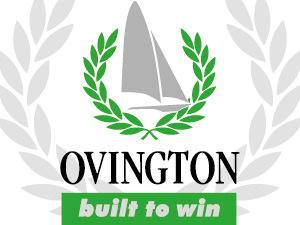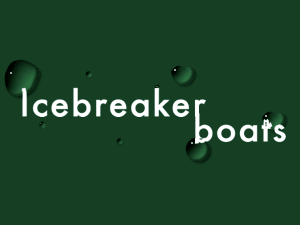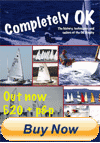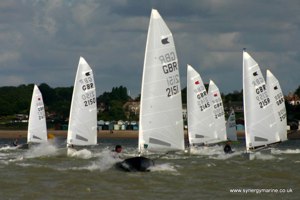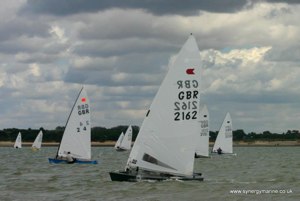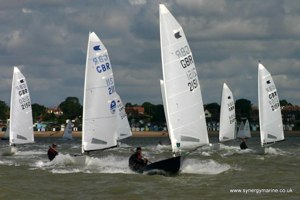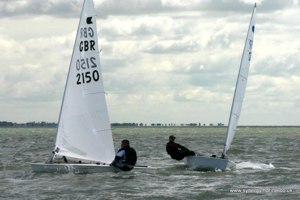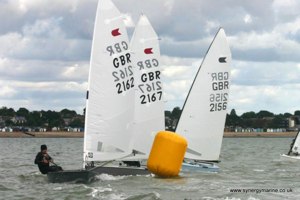You are here: okdia.org > features > 14 test of time
The OK Dinghy – Standing the test of time - 8. September 2014
Few classes have stood the test of time as has the OK Dinghy. As a concept it was born in the mind of the same Danish sailor who brought the Optimist dinghy to Europe, but the designs were laid down by a different Dane, Knud Olsen, whose reversed initials are today known so well right across the world.
The class is at a crossroads in its evolution. After reaching its peak in the 1960s and 1970s, mainly in Scandinavian countries – an incredible 1,200 boats were built in three years in Sweden alone - the class declined in popularity with the onset of the Laser. However it never went away and maintained a solid base in Europe and Australia/New Zealand. Its days as a training boat for the Finn were no more, but the class continued to provide top quality racing at venues worldwide and has helped to launch a number of famous sailing careers. The class is currently experiencing a resurgence of interest in many countries.
In the last decade new boat construction has blossomed again with nearly a dozen builders in half a dozen countries producing high quality boats. Together with the move to carbon masts in 2003, this has revitalised growth in many countries. At the recent European Championships in Germany, more than half the boats had been built in the previous five years. The class builders have really stepped up a gear in terms of finish quality and long lasting performance. Though the hulls are essentially the same shape as the first OK Dinghy in 1957, they look vastly different and this is just one of the reasons why the class is expanding.
National fleets in countries such as New Zealand and Denmark have experienced a huge increase in interest and fleet sizes in the last five years. Denmark alone has gone from around 40 to 130 boats through a consistent marketing and development programme that has attracted top sailors from other classes to boost the fleet. They have also become a force to be reckoned with internationally and are widely regarded as the country to beat at the moment.
Internationally, the class is considering a raft of proposals to modernise and professionalise administration and management processes in response to the growing fleets and the ever present expectation of better events at great venues. The UK is following a similar course with a development plan being put into action following the highly successful 2014 National Championships. It was the highest turnout for more than a decade, with 41 boats in attendance, including two newcomers in the shape of Solo National Champion, Charlie Cumbley, and Phantom National Champion, Andy Couch. However, ten years after he became the first British sailor to win the OK Dinghy World Championship, Jim Hunt finally won the British Nationals in perhaps the most competitive fleet in recent times.
Each of these sailors brings a wealth of experience to the class. Here are their thoughts on that event and the OK Dinghy.
Jim Hunt, 2004 World Champion, 2014 National Champion
Reflections on the event, “Mostly relief at not getting caught out by some of the trickier races and a bit of frustration at being too conservative at times. There was plenty of scope to cock it up. I found it very difficult to get to grips with when to prioritise between tide and wind and often felt unable to consolidate a position without feeling that I was giving up too much leverage to part of the fleet. However I am very pleased to join a long list of quality yotters that have won it before and hope I can manage to sneak another before I'm too old.”
What do you think the OK offers guys like Charlie and Andy? “The ability to customise the rig to suit weight and sailing style certainly appeals to the more discerning sailor. I expect they will be looking forward to some excellent National and International racing at some iconic venues. They've both been dominant in National classes, so I'd be surprised if they didn't have ambitions to add an OK World Championship to their CV.”
What attracts you to sail the OK? “It's a very rewarding boat to sail. I enjoy the subtleties of the rig control and the ability to be able to adjust mast position and rake to suit each condition. Downwind, the boat really rewards good steering and trim. Not being able to trim from the boom is a great rule, which stops anyone being able to 'muscle' the boat downwind and puts the onus on being smooth and precise to get the best performance. Having good juries at the big events gives fair racing and takes the responsibility for monitoring competitors away from the fleet. It also removes the Rule 42 issues that many singlehanded classes have. Being able to sail at some iconic venues and meet great sailors and people from around the world makes a pleasant change too."
Plans for the next few years? “I'm hoping I've got a few more years left in me. The plan is to try and get some training done over the winter and spring to be able to go to Poland for the 2015 World Championship with a realistic chance of winning – that was the plan this year though. I'm hoping that Nick Craig comes back and that I get the chance to train with him and Charlie. I think it would be good for all of us and help us close the gap on the Danes.”
General thoughts on the class at the moment? “I've no real evidence for this, but it feels like more people are interested in the class now than 10 years ago and that it is perceived as a sophisticated well developed boat that's both challenging and rewarding to sail. It's changed from “I used to sail one 30 years ago,” and, “isn't the boom low,” to “who made it,” and, “how much.” That can only be positive for the class. Anyone who experiences the international racing is rarely disappointed. I think the class has a very strong platform to move forward and grow over the next few years. I think that if Charlie Cumbley and Andy Couch get boats for next season and Nick Craig makes his return, it could be argued that it's going to be the toughest fleet around. What better place to test yourself?
Charlie Cumbley – fith at the 2014 Nationals
Quick reflections on first OK Nationals: “In short very positive. I enjoyed the racing despite some pretty challenging conditions for a 'first timer'. I was disappointed with my last day performance but that was just me sailing like an idiot, no more no less, but on the whole it was good to sail something different.”
Why the OK? “There are two factors, one commercial and one personal, I'm fortunate enough to be able to do some sailing as part of my work but without a doubt there is no point being there if you don't enjoy it, so it was key for me and for North's future involvement that I actually enjoyed the boat and the regatta, which I did.”
Should other top sailors think about sailing the OK? “Yes, I mentioned at the regatta that I'm surprised there isn't more 'class swapping' to try out the different boats as it's not that hard to get hold of one to try out. The same goes for other classes I'm involved in. The OK class produces very close tactical racing, which makes up for a perceived lack of performance but often this is where the best racing is to be had as the speed differences are so negligible.”
Is the OK Dinghy still a relevant class? “It's an interesting class with enough range of boat, mast, and sail options to suit a vast array of sailor's weights so I think it's very much relevant. I'll be honest in that I didn't particularly enjoy my one day out I had in one earlier in the year, but after a few days of 'practice' at the nationals you overcome its niche behaviour and get on with the racing. This paired with an excellent level of international racing should make it an enticing option for many single handers.”
What impressed you? “Everyone was very helpful. I managed to rig my boat in double quick time thanks to some helpful members of the class. On the water the close racing was impressive and the bottom line is that is what should draw others in.”
Plan for the next few years? "I definitely would like to get more involved in the class, and ideally I would like to get a boat and have a crack at the Worlds next year along with some other European events. It just depends on finances. But for sure i will be back in some form or other.”
Andy Couch - sixth at the 2014 Nationals
Your second time in an OK Dinghy. What attracts you to the class? “I've had the chance of sailing the OK twice now as Simon Childs very kindly lent me his boat in 2009 and this year Nick Craig lent me his boat. Each time I've had a go in the boat I've really enjoyed the racing. The great thing about racing the OK is the competition in the fleet. You can never take your foot off the gas as someone is usually breathing down your neck.”
Plans for the future, “I'm seriously giving it some thought to getting a boat at the minute as the racing is some of the best out there and there is also the international scene which is also really appealing.”
Any recommendations? “I'd recommend having a go in the class to anyone who was thinking about it, as it's a great class with some really good racing and very friendly people.”
The final word goes, as it often does, to Nick Craig, four times world champion, and eight times National Champion, who was not present at this year's nationals.
What do you think the OK offers guys like Charlie and Andy? “I think they will love it as it offers some of the best international amateur racing going. It is also a great boat to sail and hard to sail fast, and they will enjoy that challenge. The fleet is very social and friendly and always offers a warm welcome to new OK sailors.”
What are your plans? “I'm not sure. I've done a lot of OK sailing, 17 Worlds in a row. I felt stale in it last year so I've taken time off, but I'll be back when my hunger returns. I have a short attention span so it is testament to the great racing and camaraderie within the class that I loved sailing the OK for so long. If I had my time again, I would absolutely do 17 consecutive Worlds in the OK again and highly recommend the OK for anyone from 75-95 kg.”
Would some big names bring you back? “Yes definitely. If Charlie and Couchy bought boats I would certainly do some more events next year as it's great racing against these guys. With family commitments, I'm doing less sailing and travel so having quality UK racing is a major draw. The UK class is on the up with top sailors joining. Jim Hunt is on form, Lee Child is going fast and the highly experienced Terry Curtis and Robert Deaves and others are always quick.”
What does the OK offer? “As well as great international racing, the OK is a great lake and river boat because it tacks so quickly and effectively. So the OK can be enjoyed at both club and international level. It accommodates a wide weight range. I have seen masts with up to 100% difference in bend characteristics which is a key enabler for that weight range. The boats are really well built and with no rig tension have a very long competitive life. They aren't the cheapest as you pay for quality but with a massive competitive life and good resale values, the OK works out as good value for money.”
Why should other top sailors consider the OK? “The international racing offers a fantastic challenge at great venues and they are always very well run events. The OK is tricky but rewarding to sail. It has a narrow and nebulous groove upwind that is very rewarding when found. Downwind, the OK responds to precise and smooth steering. Despite having sailed the OK way more than any other boat, I find it the hardest boat to jump back in and find the fast button. Top sailors will relish those challenges.”


